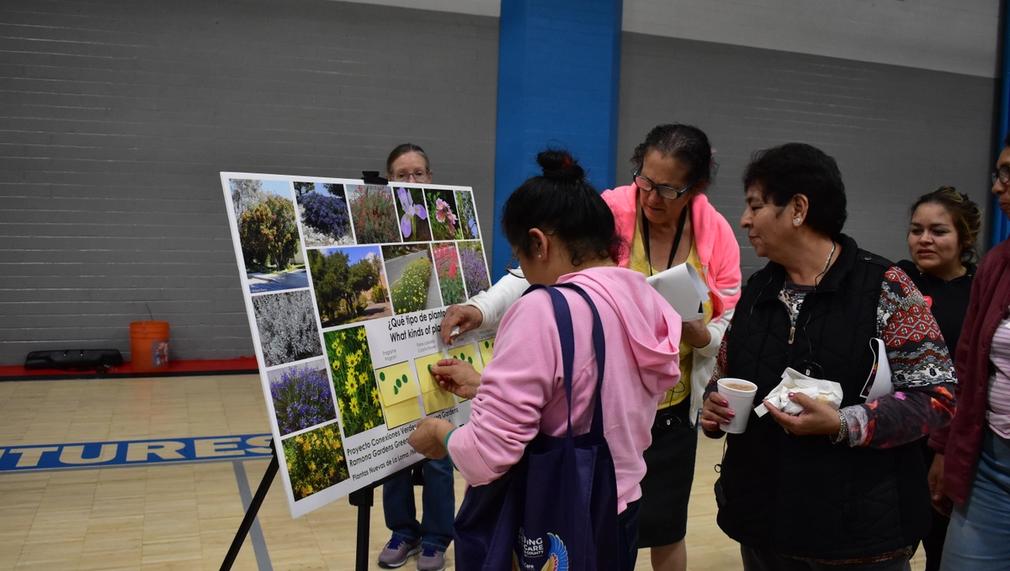A greener Los Angeles together
Being a bridge to foster input from community leaders on greening projects has always been central to NET's work. Funding restrictions often limit the scope of our community engagement to be project-based, but effective community outreach requires a sustained presence. Funding from LA 2050 would make this possible, transforming how we conduct community outreach and providing economic empowerment to community members to engage in greening their local community.

What is the primary issue area that your application will impact?
Green Space, Park Access, and Trees
In which areas of Los Angeles will you be directly working?
Central LA
East LA
South LA
Other:: Northeast Los Angeles
In what stage of innovation is this project, program, or initiative?
Pilot or new project, program, or initiative
What is your understanding of the issue that you are seeking to address?
We specialize in bringing green resources to communities that are disadvantaged, overburdened, and underserved. Often these are communities of color that have undergone historical redlining and other environmental injustices, some in the 99th percentile of severity statewide. These classifications describe an unjust lived reality: air pollution, lack of trees and green space, extreme heat with no shade, lack of economic opportunity, hazardous waste, linguistic isolation, poverty, and unemployment all adversely affecting lives and life expectancies. Against all odds, these communities are resilient. Residents are community builders and stewards who contribute to environmental justice through feedback, volunteering, guidance, design inputs, and employment. Greening communities must be a collaborative effort where residents have the agency to lead change. Bridging the historical disparities between environmental spending and community need is a signature of NET's work.
Describe the project, program, or initiative this grant will support to address the issue.
This project is a transformative maturity step in our community engagement approach. In the past, we've engaged with communities mainly through specific time-bound projects. We usually partner with other nonprofits to deliver community engagement. While this has had many benefits, we recognize that broadening our engagement model to center ongoing relationships with communities (beyond specific funded projects) and source community engagement expertise in-house is crucial for continued quality, integrity, and success. The project has three interwoven strands, all of which prioritize uplifting historically marginalized perspectives and ensuring there's a place for everyone at the table: 1. Community listening and reflection: Provide a range of opportunities for people of all ages and backgrounds to talk with each other and with NET about their community's environmental needs, knowledge, and aspirations, evaluating and growing together by uplifting more stakeholder voices (20 events). 2. Community action: Create and support place-based direct action Green Teams in the neighborhoods we serve (3 teams: Watts; Buchanan Street Elementary School; and Ascot Hills Park/El Sereno, including K-12 students). 3. Community benefit: Distributing funds for communities to engage in direct action that improves green spaces in their neighborhoods (over $24,500 in direct funding to community members, including internships).
Describe how Los Angeles County will be different if your work is successful.
Funding from LA 2050 will optimize all of our work through rigorous community involvement that creates an ongoing exchange between NET and the communities we serve, through Community Listening, Community Action, and Community Benefit. NET annually invests $2 million of government and private funding into nature-based projects across LA County. The County will be improved with greening, parks, and trees because an innovative community engagement process will guide our work. Our work spans from street tree planting in South LA with a training workforce of locally hired youth; to our community-based Native Plant Nursery; to a leadership program for 100 youth making environmental changes in their local communities; to a study to devise a future for the LA River near Griffith Park; a nature-based transformation of a schoolyard in a disadvantaged neighborhood; tree distributions to residents; urban fire resilience and water quality projects; nature spaces at housing projects; and more.
What evidence do you have that this project, program, or initiative is or will be successful, and how will you define and measure success?
This project pivots from our current approach, shifting from outsourced to in-house community engagement that is ongoing, not project-based. We will succeed when we create a vibrant community engagement culture underpinned by systems that ensure that what we learn in our LA2050 year is mainstreamed in our organization's DNA. Success will be indicated by the quality of engagement (measured throughout) and by the extent to which the project activities are mainstreamed because there is consensus on the effectiveness of the approach (measured after the funding period). We will assess engagement quantitatively and qualitatively: event/workshop attendance, evaluations, testimonials, peer feedback, retention of community members in activities, and staff/board reflections. A baseline of community attitudes at the beginning of the project, followed by iteration and documentation throughout, will allow us to understand the learning from this project and embed the work into NET operations.
Approximately how many people will be impacted by this project, program, or initiative?
Direct Impact: 383
Indirect Impact: 13,637